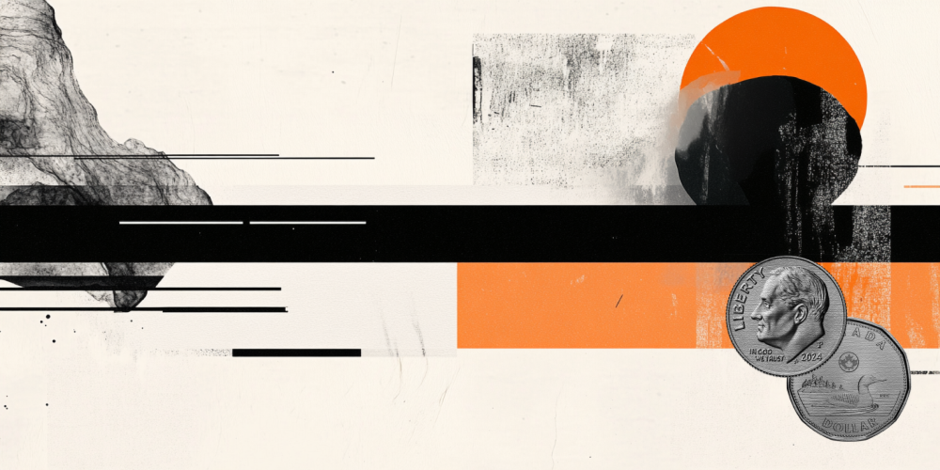Canadian Dollar gains ground despite accelerating CPI inflation
- The Canadian Dollar stepped higher against the US Dollar on Tuesday.
- BoC Canadian CPI inflation metrics ticked higher in April.
- The Loonie continues to roil in medium-term consolidation territory against the Greenback.

The Canadian Dollar (CAD) found a foothold on Tuesday, grinding out a slight gain against the US Dollar (USD). However, gains were limited after the BoC’s own version of the Canadian Consumer Price Index (CPI) inflation rose even faster than expected in April, signaling that the Bank of Canada’s (BoC) feverish rate-cutting cycle may well be over.
Canadian inflation accelerated again in April, with key CPI indicators rising more than expected in April. The BoC has been on a rate-cutting tear, delivering seven straight rate cuts, including two jump double-cuts of 50 bps since kicking off a cutting cycle in June of 2024. The Canadian interest rate has plummeted from its 5% peak reached in 2023, dragging the central bank’s key rate down to 2.75% this March. With Canadian inflation back on the rise, and Canadian housing prices apparently not getting the memo that the BoC is trying to use rate cuts to improve housing affordability, the BoC’s window to cut rates may now have closed.
Daily digest market movers: Canadian Dollar catches some bids, but gains remain limited
- The Canadian Dollar rose on Tuesday, climbing a scant one-sixth of one percent against the Greenback.
- Despite near-term gains bolstering the Loonie slightly, the CAD remains down against the the US Dollar in recent weeks.
- Canadian headline CPI inflation rose 1.7% YoY in April, down from the previous 2.3% but still coming in higher than expected.
- The BoC’s core Canadian CPI measure accelerated to 2.5% YoY, climbing from the previous period’s 2.2%.
- BoC core CPI rose sharply on a monthly basis in April, accelerating to 0.5% MoM compared to March’s 0.1%.
Canadian Dollar price forecast
The Canadian Dollar has caught some lift in the near-term, rising 0.7% against the Greenback from last week’s lows. However, the CAD remains down sharply against the US Dollar in recent weeks, and USD/CAD bids remain up 1.2% from their multi-month lows near 1.3750.
The 200-day Exponential Moving Average (EMA) is proving to be a hard technical barrier for the USD/CAD pair, parked firmly near 1.4025 level. Price action pivoted into a bullish USD stance in recent weeks, however the pair has thus far shied away from taking a hard run at the key moving average.
USD/CAD daily chart

Canadian Dollar FAQs
The key factors driving the Canadian Dollar (CAD) are the level of interest rates set by the Bank of Canada (BoC), the price of Oil, Canada’s largest export, the health of its economy, inflation and the Trade Balance, which is the difference between the value of Canada’s exports versus its imports. Other factors include market sentiment – whether investors are taking on more risky assets (risk-on) or seeking safe-havens (risk-off) – with risk-on being CAD-positive. As its largest trading partner, the health of the US economy is also a key factor influencing the Canadian Dollar.
The Bank of Canada (BoC) has a significant influence on the Canadian Dollar by setting the level of interest rates that banks can lend to one another. This influences the level of interest rates for everyone. The main goal of the BoC is to maintain inflation at 1-3% by adjusting interest rates up or down. Relatively higher interest rates tend to be positive for the CAD. The Bank of Canada can also use quantitative easing and tightening to influence credit conditions, with the former CAD-negative and the latter CAD-positive.
The price of Oil is a key factor impacting the value of the Canadian Dollar. Petroleum is Canada’s biggest export, so Oil price tends to have an immediate impact on the CAD value. Generally, if Oil price rises CAD also goes up, as aggregate demand for the currency increases. The opposite is the case if the price of Oil falls. Higher Oil prices also tend to result in a greater likelihood of a positive Trade Balance, which is also supportive of the CAD.
While inflation had always traditionally been thought of as a negative factor for a currency since it lowers the value of money, the opposite has actually been the case in modern times with the relaxation of cross-border capital controls. Higher inflation tends to lead central banks to put up interest rates which attracts more capital inflows from global investors seeking a lucrative place to keep their money. This increases demand for the local currency, which in Canada’s case is the Canadian Dollar.
Macroeconomic data releases gauge the health of the economy and can have an impact on the Canadian Dollar. Indicators such as GDP, Manufacturing and Services PMIs, employment, and consumer sentiment surveys can all influence the direction of the CAD. A strong economy is good for the Canadian Dollar. Not only does it attract more foreign investment but it may encourage the Bank of Canada to put up interest rates, leading to a stronger currency. If economic data is weak, however, the CAD is likely to fall.
Author

Joshua Gibson
FXStreet
Joshua joins the FXStreet team as an Economics and Finance double major from Vancouver Island University with twelve years' experience as an independent trader focusing on technical analysis.

















